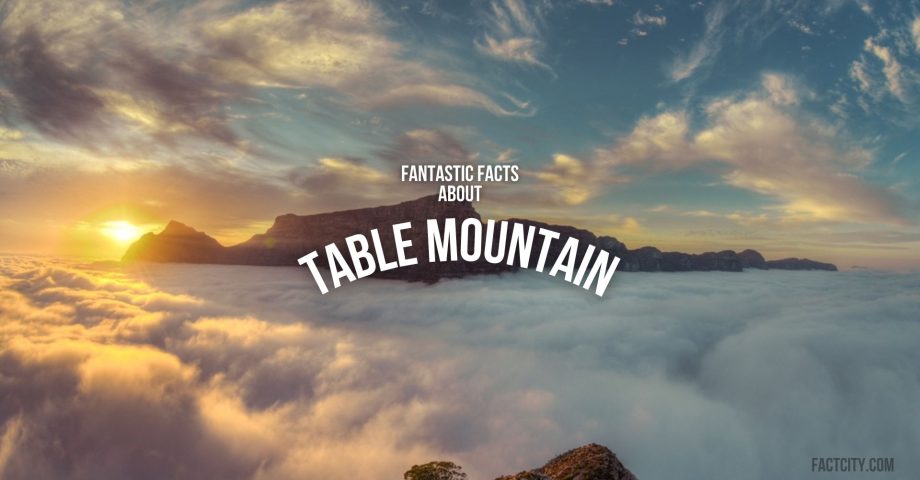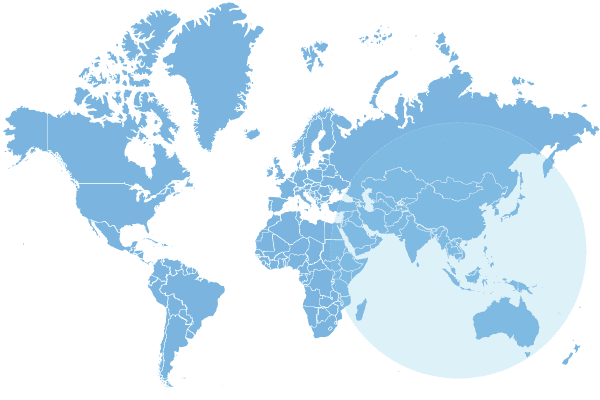It’s one of Africa’s best-known natural landmarks – and, probably a reason why so many people explore South Africa and the surrounding areas.
As far as mountains go, Table Mountain tends to stand out! Not only does it stand tall, but it also has a unique shape that gives it its world-famous name – it really is as flat as you’ve heard it is. That said, there’s a little more to Table Mountain than just a flat head.
In this fact file, I’ll take you through stacks of stats and figures about the gigantic peak (which doesn’t really have much of a peak at all) – whether you’re planning a trip to Cape Town any time soon or are simply topping up your geographical knowledge, here are some fun facts about Table Mountain that you can scale at your leisure.
1. Table Mountain is in the heart of Cape Town, South Africa.
Table Mountain can be found in Cape Town, South Africa – and it’s pretty hard to miss as it is a prominent feature of the city’s landscape! In fact, the mountain’s national park welcomes around 4.2 million people every year – it’s big business for Cape Town’s tourism. Around 800,000 people visit the mountain itself!
In fact, those figures wipe out the visitor numbers for Ben Nevis, the UK’s tallest mountain! It’s estimated that around 150,000 people visit the peak every year, meaning if there was a popularity contest, Table Mountain would be coming out on top.
Ben Nevis will be popping up again through this fact file – just as a nice point of reference for what we have in terms of British peaks!
2. It’s one of few mountains to have a flat top.
Table Mountain gets its name from its flat, table-like summit. The summit runs approximately three kilometres or 1.86 miles from end to end, if you ever fancy walking it (but you’ll have to get to the top first!
The UK has a few flat-topped mountains, too, if you’d prefer a leisurely stroll once you reach a peak. For example, there’s the Long Mynd in the Shropshire Hills, which has a neighbour, Clee Hill, also famous for its flat top. Elsewhere, over in the Brecon Beacons, there’s Pen y Fan – which is around 886 metres or around 2,906 feet tall with a flat top!
3. Its highest point is Maclear’s Beacon.
Maclear’s Beacon stands at an elevation of 1,086 metres above sea level. That’s a staggering 3,562 feet!
Let’s welcome back Ben Nevis for a quick comparison – it’s the tallest mountain in the UK, standing at around 1,344 metres, or 4,409 feet tall! Therefore, Ben Nevis is beating Table Mountain in terms of height, if not in the popularity stakes!
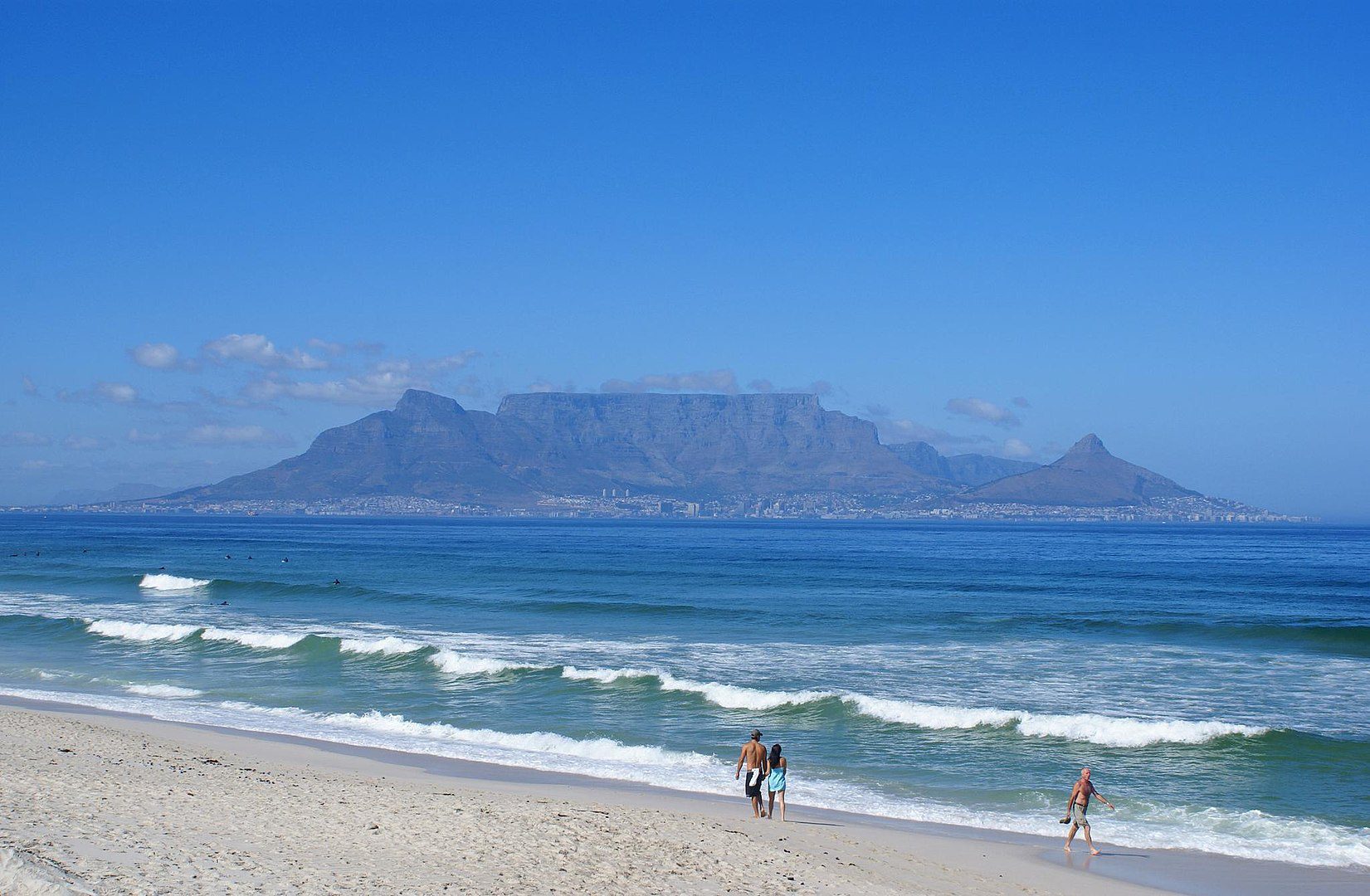
4. Thousands of British holidaymakers visit Table Mountain every year.
Although there aren’t any exact figures on how many people from Britain visit Table Mountain annually, there are at least thousands that make the journey out to Cape Town to see it. It’s thought that the UK is only second to Germany when it comes to the number of international visitors to the national park.
That’s roughly 16% of its annual visitors – meaning that mountaineers really do flock in their thousands from the UK.
5. There’s help available here for British visitors.
If you’re visiting Cape Town and Table Mountain from the UK, it’s worth taking note of the details for the area’s British Consulate-General. The BCG represents the British government in Cape Town and broader South Africa.
Specifically, the office provides help and information to British nationals residing in the area, and to visitors who are heading there for holidays or to work. Check out the UK government’s breakdown on help and services in South Africa before you travel.
While the UK has not restricted travel to South Africa, the government still advises that there are threats of terrorism and violent crime across the country, meaning in tourist areas such as Table Mountain, you are still advised to take immense care when travelling – especially if you are going alone, which is not recommended.
6. It’s often covered by a tablecloth.
Table Mountain is often covered by a blanket of clouds, known fondly by many as the ‘tablecloth’. And yes, this mountain is tall enough for those who scale it to get their heads in the clouds!
There’s actually some legends attached to the tablecloth – some people believe that in a duel between man and the devil, the latter disappeared in a burst of smoke – which was left lingering over the top of the mountain!
If you take a look at photos of the mountain across social media, you’ll likely see the thick blanket of clouds over the top. It’s truly amazing to explore up close and personal, but be careful with altitude sickness!
7. It has a rich biodiversity that’s recognised by UNESCO.
Many of Table Mountain’s plants and animals are completely unique – to the impressive extent that the area is a UNESCO World Heritage site as a result of its unique flora alone. It is particularly well-known for its unique fynbos, which is a type of Mediterranean shrubland.
If you’re a wildlife lover, you’ll want to keep your eyes peeled for cape foxes, mongooses, tortoises, lizards, and porcupines. And, if you’re really lucky, you might catch sight of the endemic Table Mountain ghost frog, which cannot be found in the wild anywhere else on the planet!
Table Mountain is said to be home to more than 300 different species of bird alone – meaning it’s certainly a trip you’ll want to take your binoculars for! Plant lovers can rejoice, too – there’s as many as 8,000 different species here, with around 2,200 estimated that are flowering around the region at least.
8. Many people head to the summit – though not always by climbing!
To reach the summit of Table Mountain, take to its rotating cable car and check out the panoramas of Cape Town below. Sunset from the summit is particularly popular with tourists – you can even see the sun go down over the Atlantic. Just make sure you can get back down safely after dark!
Climbing Table Mountain will usually take an experienced mountaineer anywhere between three and five hours, so make sure to take plenty of water to drink if you want to try and scale it yourself. Again, there’s safety in numbers out here!
It’ll take you around seven to nine hours to scale Ben Nevis, just to compare – so Table Mountain might be considered something of a practice run – just don’t say that too loud while you’re here!
If you’d prefer a swift tour of the summit and surrounding area, you should expect to put aside around two hours. However, you’ll be missing out on some stunning sights!
9. You can also try hiking or rock climbing.
Table Mountain’s many active trails range from easy walks to more challenging and rocky routes for experienced hikers. Table Mountain also offers rock climbing opportunities, with a variety of routes for climbers – just pack the essential climbing gear before you start!
The fastest-ever known ascent and descent at Table Mountain was two hours, two minutes, and 13 seconds – Ryan Sandes remains the record holder at this point. However, it’s not recommended that you try and beat his record without extensive training first!

10. You’ll need to exchange pounds for the South African Rand.
To pay for attractions, food, and drink around the Table Mountain area (and indeed deeper into South Africa), you’ll need to exchange pounds for the rand.
The fluctuation in exchange rate between the pound and the rand will always vary, so it’s a good idea to check rates with your bank or your chosen exchanger before you travel to Table Mountain. At the time of writing, the exchange between the pound and the rand appears to have hit a peak (pun intended), with 24.44 rand exchangeable for one British pound.
However, the exchange rate has dipped as low as 10.66 rand in December 2010 – meaning, long term, who’s to say how much you could get back in the exchange? It’s wise to exchange money before you travel if you can (and it’s one less thing to worry about when you get to South Africa)!
11. It was home to many people going back centuries.
Table Mountain has important historical and cultural significance to the people of South Africa – it was once inhabited by the indigenous Khoi-San people, for example!
It’s thought that herders populated the area thousands of years ago thanks to the park’s optimal grazing conditions for livestock and its closeness to water. They would live and thrive here for centuries until European settlers arrived in the 15th century.
It was these settlers who would change the original name of Horikwaggo to Taboa do Cabo, Table of the Cape, or Table Mountain.
12. Cable cars have been running here for around a century.
The first cable stations and cars set up at Table Mountain opened in the late 1920s, getting occasional upgrades over the years.
It’s thought that the cars help to ferry more than a million people a year, giving them an amazing 360-degree panoramic view of the mountain and the surrounding area. If you’re worried about heights, you’ll naturally want to stay in the park itself – however, the cable cars are well maintained and extremely safe to use.
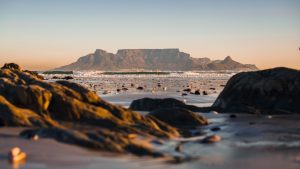
13. It’s frequently besieged by bad weather.
The weather up here on Table Mountain is seriously changeable – for real! It is always a wise idea to check the weather forecast and dress accordingly when visiting, especially if you are inexperienced at hiking, climbing, and so on.
It receives a somewhat Mediterranean climate, meaning winters here tend to be mild, even if the weather is mixed. There are strong winds in the summer, largely thanks to the Cape Doctor – which is a dry wind that blows across the South African coast. It’s called that because it’s said to help ‘cure’ the Cape Town area of pollution!
Table Mountain and South Africa in general receive around 46.4cm or 18.2 inches of rainfall every year. Compare that to what we’re used to in the UK – as much as 140cm or 55.1 inches! You might want to bring a brolly, but it’s the breeziness you’ll need to watch for the most.
14. There’s a constellation named after the mountain.
Table Mountain holds the incredible honour of being the only natural Earthly feature to give a name to a constellation! Specifically, Mensa, or The Table, is named after the mountain. It’s actually named by Nicolas de Lacaille, who stayed in the area in the 1700s.
If you want to try and see Mensa or The Table for yourself, it’s easiest to spot in the height of summer in the Southern Hemisphere. If you can spot Orion, you should be able to see Mensa just below it. You might even spot The Table while visiting Table Mountain!
15. There are lots of ways to get to Cape Town from the UK.
If you’d like to explore Table Mountain, its park, and Cape Town, you’ll be pleased to know that there are many regular flights from our busiest airports that get you up close to this gorgeous corner of the globe.
At present, there are scores of regular flights out to Cape Town from UK airports, such as Heathrow, Gatwick, Manchester, and Birmingham. You’ll normally spend an average of 14 to 15 hours on flights out of Heathrow, and there are typically 40 to 50 connections from this airport alone.
Flying is absolutely the fastest way to get here, however, you may need to make some train connections along the way. Airlines that connect the UK to Cape Town include Air Swiss, British Airways, Air France, and Lufthansa.
As always, make sure to check resources such as SkyScanner and Rome2Rio before you fly, so you can see the fastest and most affordable connections.
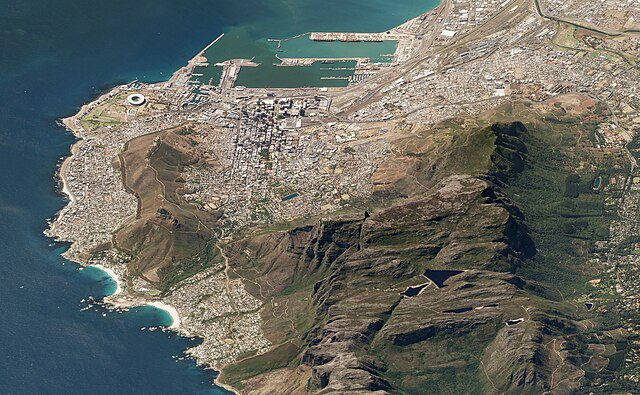
16. It’s relatively easy to get from Cape Town to Table Mountain.
Once you’re in Cape Town, you’ll naturally want to know how to get to the Table itself – and, generally, it’s a 20-25 minute road trip down the local motorways, traffic depending.
You’ll also be able to take public transport out here, such as via the MyCiTi bus, which departs from Hertzog Boulevard. If you want to take this method of transport, you’ll need to make sure you have a valid myconnect card, and have money on the card to board your chosen buses.
There’s tons of useful information on how to get to Table Mountain via the aerial cableway’s website – take note of what’s suggested and start making your travel plans!
You can even take in the broader area through the City Sightseeing tour, which takes you on a bus trip around Cape Town’s tourist spots. Journeys on this bus usually take around an hour and a half. Sometimes it’s nice to have someone show you around somewhere new!
17. There are lots of features you can spot from the top of Table Mountain.
Of course – once you get to the top of Table Mountain, what is there to see? Plenty, as it happens!
For example, you’ll be able to see the city harbour, which was originally built by Dutch settlers in the mid-17th century. You’ll also spot some suburbs around the area, which once played host to Dutch farms built into the mountain’s slopes.
Look closely around the summit, and you might even be able to spot the Castle of Good Hope! Originally built in the 17th century, its remnants are still standing, making up what’s still regarded as the oldest building from the colonial age across the country.
The only issue is once you’re at the top – you might not want to come back down right away! Be sure to take a few photos and videos and share them with all and sundry. We want to see those snaps!
FAQs about Table Mountain
What is so special about Table Mountain?
Table Mountain is unique in its landscape, biodiversity, and views. It is a stunning part of South Africa that attracts tourists from all over every year. It’s been home to local tribes dating back thousands of years, and was later colonised by Dutch visitors.
How long does it take to walk up Table Mountain?
It can take about five hours to complete a hike around Table Mountain. However, it can take more or less time, depending on how skilled you are as a hiker. Be sure to train well regardless of your experience! Your time taken can also depend on the trails you choose, so make sure to research your options carefully before you arrive.
How much does it cost to go up Table Mountain?
Ticket prices to go up Table Mountain can range up to R420 (local currency). The price will vary depending on your age, whether or not it is a return or one-way ticket, and what time of year you visit.
Further reading
https://www.tablemountain.net/
https://www.capetown.travel/explore-cape-towns-iconic-table-mountain/
Do you know any interesting facts about Table Mountain? Share them in the comments section below!
